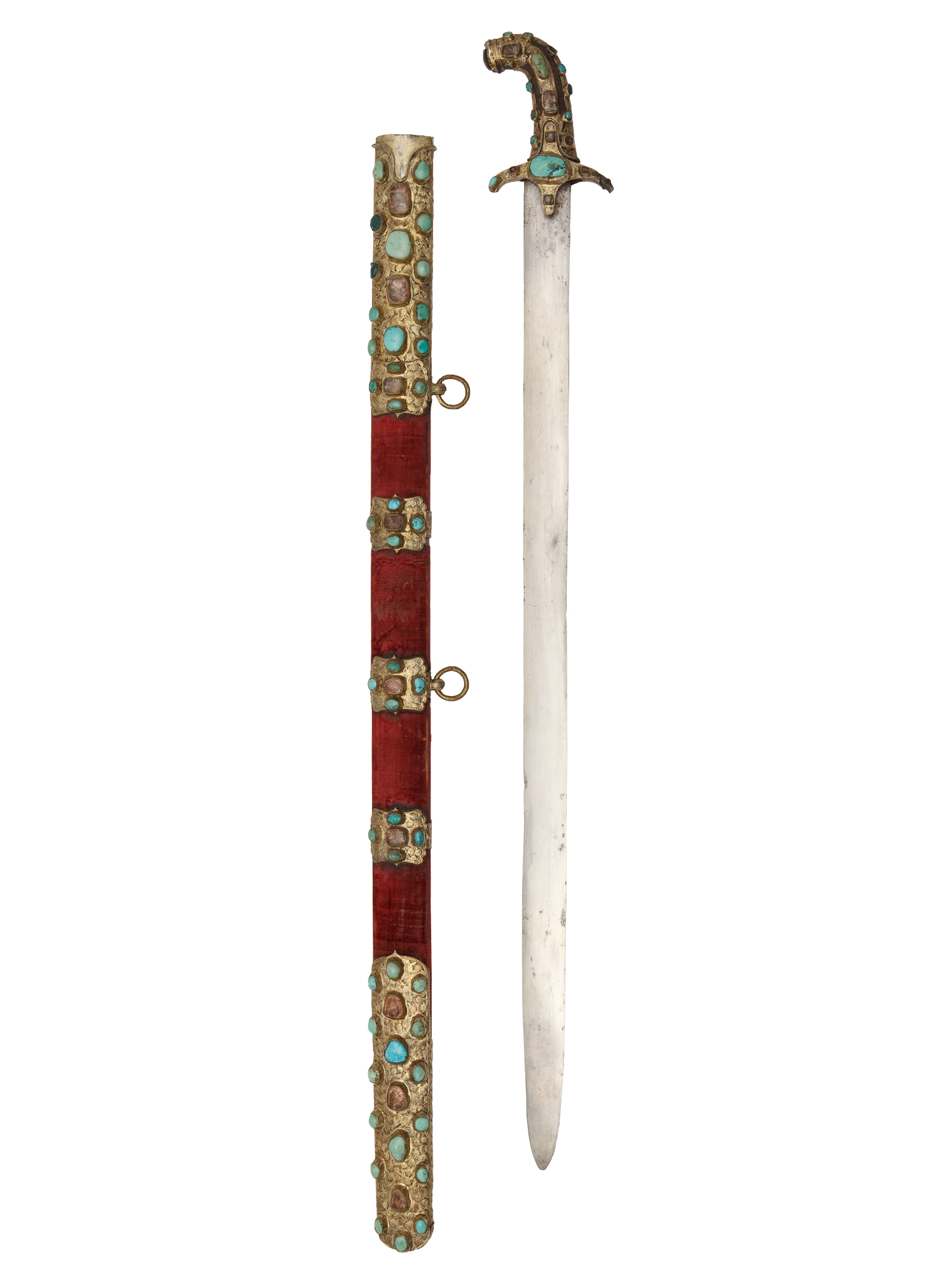THE BROADSWORD of PRINCE MIKHAIL V.SKOPIN-SHUISKY, IN SHEATH

The broadsword belonged to Mikhail Vasilyevich Skopin-Shuisky (1586–1610), the famous Commander and a relative of Tsar Vasily Shuisky. During the siege of Moscow by False Dmitry II, Mikhail Skopin-Shuichi was sent by the Tsar to Novgorod to negotiate with the Swedish government providing a military assistance against the men of Tushino and Poles. Having recruited warriors, Prince Skopin-Shuisky, together with a hired army, headed by Jacob Delagardi, in April of 1609, moved to “save the throne.” Thanks to successful actions of the young generals were liberated Volga Cities, was removed the siege of the Troitse-Sergeeva Lavra and the siege of Moscow. On March 12 of 1610 Skopin-Shuisky’s troops entered the Capital, which met the young Prince as a redeemer of scourge and troubles. Perhaps it is this time the Tsar Vasily Shuisky has awarded the commander with a precious broadsword. According to another version, the broadsword could have been presented to Skopin-Shuisky in 1604, when, as a steward, he was present at a dinner given to the Iranian Ambassador in the Granovitaya (faceted) chamber of the Moscow Kremlin. Soon Skopin-Shuisky suddenly got sick and suddenly died. It is still unknown what caused his death. The people’s rumors claim that it he was assassinated as an apparent candidate to the Throne; he was poisoned by the wife of the Tsar’s brother, a daughter of Maluta Scouratov.
More information...After the death of the commander the broadsword got into the hands of Prince Ivan Shuisky, a brother of Tsar Basil Shuisky, who owned it until 1638. In 1647 it belonged to Prince Semen Vasil'evich Prozorovsky (1586–1659), Russian military leader and statesman, steward, Governor and nobleman. Same year Prozorovsky donated the sword “in a silver covers with stones, the own Prince Mikhail Vasilyevich Shuisky-Skopins’ sword” to the Solovetsky Monastery in vestry of which it remained until the beginning of the XX Century.
The blade of the sword was probably replaced in the course of existence, which in the XVII Century was done quite often. The blades of ceremonial Iranian weapons have always been Damask and, as a rule, with Oriental inscriptions and stamps, induced by gold or silver.
